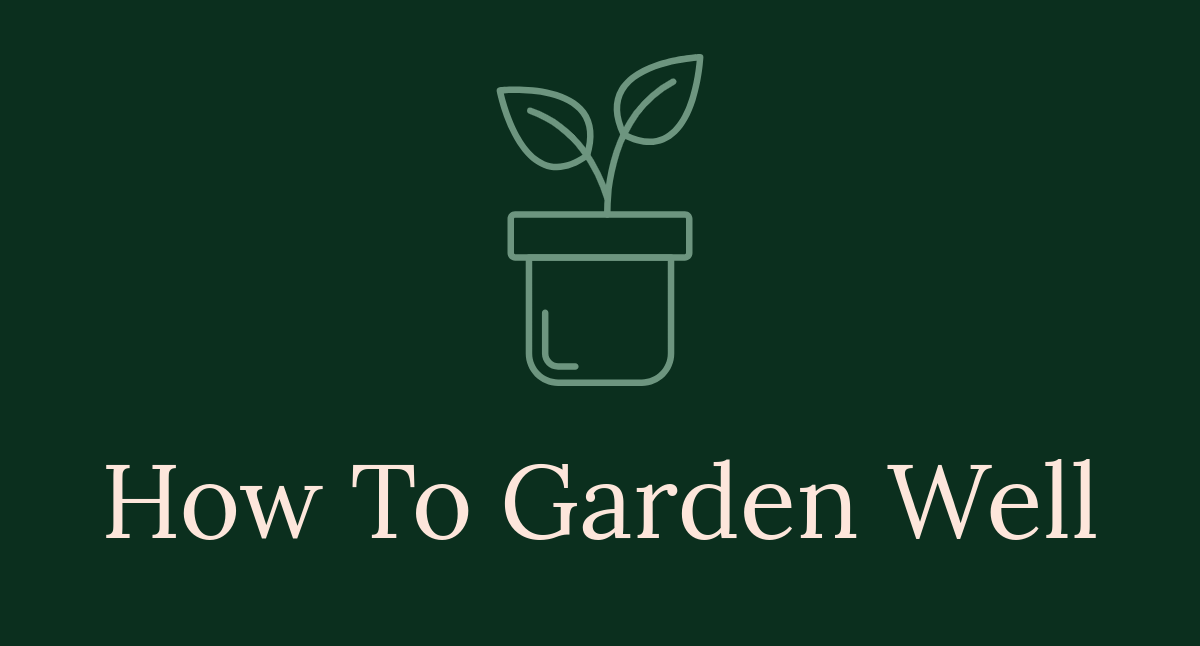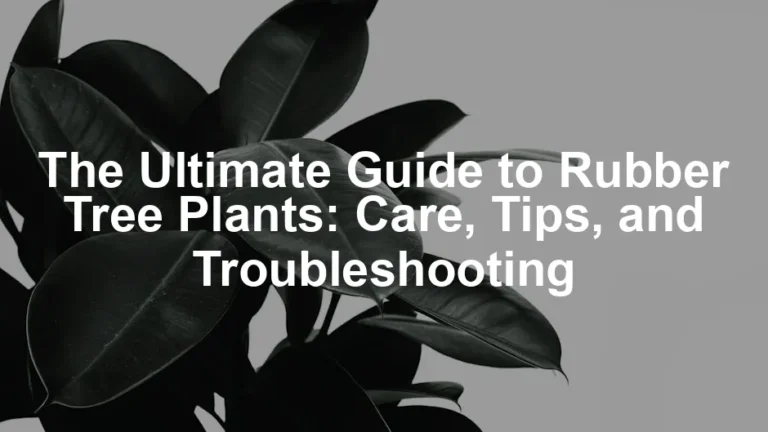
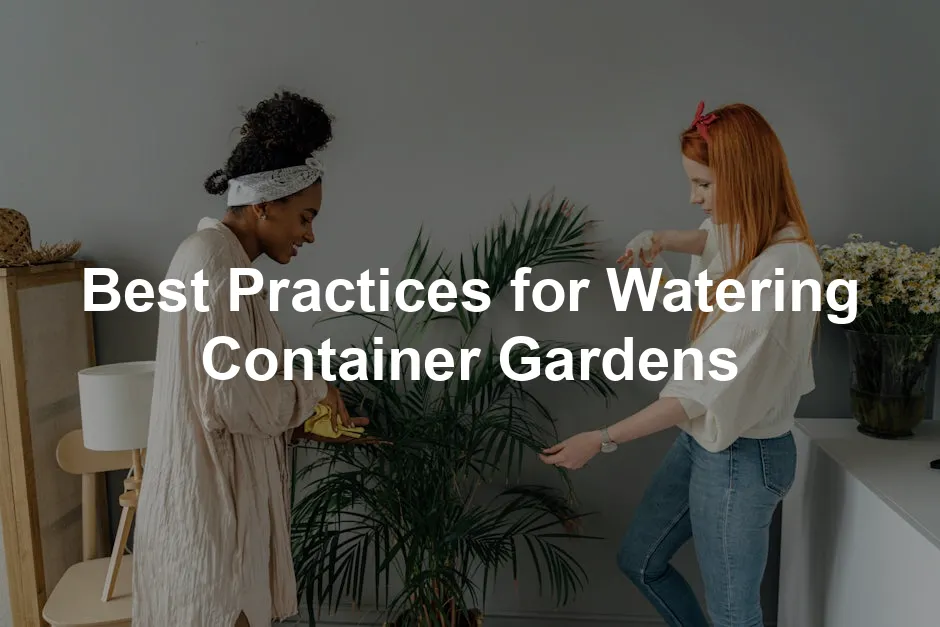
Best Practices for Watering Container Gardens
Introduction
Watering is the lifeblood of container gardening. Without it, your beautiful plants will turn into sad, wilted versions of themselves. Container gardens face unique challenges, primarily due to their limited soil volume. Picture this: a tiny pot holding onto moisture like a sponge, but with the sun beating down, it quickly dries out. If you’ve ever felt the frustration of over or under-watering your plants, you’re not alone!
Proper watering is essential for plant health. It ensures roots grow strong and vibrant. In this article, we’ll uncover best practices for watering container gardens that not only promote healthy plants but also conserve water. Let’s jump into the world of watering wisdom!

Understanding Container Gardens
What Are Container Gardens?
Container gardening is the practice of growing plants in pots or other containers instead of directly in the ground. This method allows for flexibility, creativity, and mobility. Imagine being able to rearrange your garden with just a little muscle—it’s like gardening on wheels! Common examples include hanging baskets, window boxes, and patio pots filled with colorful flowers or delicious vegetables.
The benefits? Oh, there are plenty. Container gardens are perfect for small spaces, making them ideal for urban dwellers. They provide excellent drainage, control over soil quality, and the ability to grow plants that might not thrive in your native soil. Plus, they can add a pop of color to your deck or balcony, making your outdoor space feel more inviting. To keep those plants cozy, consider Plastic Plant Pots for easy maintenance!

Importance of Watering in Container Gardens
Watering isn’t just a casual task; it’s a vital part of keeping your container plants happy. Unlike in-ground gardens, container gardens dry out much faster due to their limited soil volume and exposure to the elements. As a result, improper watering can lead to stressed plants or, worse, plant death. Too much water and your plants might drown; too little and they’ll wither away.
Understanding when and how much to water your container plants can mean the difference between lush growth and a sad garden. By mastering the art of watering, you’ll ensure that your plants remain healthy, vibrant, and flourishing. Stay tuned as we dive deeper into the best practices for watering your container garden!
Best Practices for Watering Container Gardens
1. Check Soil Moisture Levels
Watering your container garden effectively starts with knowing when to water. How do you gauge when your plants are thirsty? Fear not! There are simple techniques that can help.
The classic finger test is a quick and easy method. Stick your finger about two inches deep into the soil. If it feels dry, it’s time to hydrate those green babies! If it’s moist, hold off on watering. Just remember, your finger is a great tool, but it’s not perfect—sometimes it can miss pockets of dryness.
For a more high-tech approach, consider using a Moisture Meter for Soil. These handy gadgets measure the moisture levels in the soil, taking the guesswork out of watering. Simply insert the probe into the soil and check the reading. It’s like having a personal plant assistant, minus the coffee runs!
Now, let’s talk about signs your plants are waving the white flag. Wilting leaves? Drooping stems? Discolored foliage? These are all cries for help! Your plants might be telling you they’re thirstier than a desert cactus. Regularly checking moisture levels and observing your plants will help you develop a watering routine that keeps them vibrant and thriving.
2. Watering Schedule
Timing is everything when it comes to watering container gardens. You want your plants to soak up as much moisture as possible without wasting water. So, when’s the best time to water? Morning is your golden hour! Watering early allows plants to absorb moisture before the heat kicks in. Think of it as a refreshing morning coffee for your plants—perfect to kickstart their day.
Avoid watering during the hottest part of the day. Why? Because much of that precious water will evaporate before your plants can drink it. Talk about a bummer! Evening watering can also lead to trouble. Excess moisture at night creates a cozy environment for rot and pests. Yikes!
Now, how often should you water? The frequency depends on several factors, including weather conditions and the types of plants in your containers. Hot days may require daily watering, while cooler, cloudy days might allow for longer intervals. Don’t forget to adjust your schedule based on your plant types. Succulents prefer a more relaxed watering routine compared to their thirstier cousins like annuals or vegetables. If you’re looking for a guide on how to feed your plants, grab some Plant Food Fertilizer to keep them nourished!

3. Watering Techniques
a. Deep Watering
Let’s dig into deep watering—literally! Deep watering is a fantastic technique that encourages roots to grow strong and deep, making your plants more drought-resistant. It’s like sending your plants to a spa day, where they can soak in all the goodness.
To achieve deep watering, start by soaking the soil thoroughly until water drips from the drainage holes at the bottom of the container. This ensures moisture penetrates deep down to the roots. If you find that your soil is particularly dry, it may be beneficial to water in stages. Apply some water and let it soak in for a few minutes before adding more. This helps the soil absorb the moisture rather than letting it run off.
For those seeking a hands-free approach, consider a Drip Irrigation System. This method delivers a steady supply of water over time, ensuring that your plants are never left parched. You can set it up on a timer, so you can focus on sipping lemonade while your plants get the care they need.
Remember, deep watering is key to healthy roots. Strong roots mean happy plants, and happy plants lead to a thriving container garden. So, next time you water, think deep, and give your plants the hydration they deserve!
4. Choosing the Right Container
Container choice is more than just aesthetics; it greatly impacts plant health. The materials and sizes of your containers can make or break your watering strategy.
For starters, materials matter. Terracotta pots are charming but notorious for drying out quickly. If you’re aiming for moisture retention, opt for Glazed Ceramic Planters or plastic containers. These materials hold onto water more effectively, keeping your plants hydrated longer. Remember, a happy plant is a hydrated plant!
Size is also crucial. Smaller pots require more frequent watering, while larger containers can hold more moisture, reducing your watering chores. However, be cautious with oversized pots. They can lead to stagnant water, which is a recipe for root rot. Always choose a pot that fits the plant’s root system well.
Let’s not forget drainage holes! They’re your container’s best friend. Proper drainage prevents water from pooling at the bottom, which can drown roots faster than you can say “overwatered.” Elevate your pots on a few bricks or a saucer to ensure drainage holes stay clear. This simple step can save your plants from drowning in a soggy mess.
In summary, select containers that balance moisture retention with good drainage. Your plants will thank you with vibrant blooms and lush foliage!

5. Soil Considerations
Choosing the right soil is like setting the foundation for a house—crucial for success! For container gardening, a high-quality potting mix is essential. Avoid garden soil; it compacts too much and doesn’t drain well. Instead, look for a potting mix designed for containers, often made from peat, vermiculite, or perlite. This mix promotes aeration while retaining moisture.
Now, let’s talk about moisture-retentive amendments. Incorporating Moisture-Retentive Crystals can be a game changer. These little wonders absorb water and release it slowly, keeping your soil consistently moist. Imagine your plants sipping on hydration throughout the day, even when you forget to water—sounds like magic, right?
Regularly check your soil’s structure, too. Over time, potting mixes can lose their ability to retain moisture. This is when you might need to repot or refresh your soil mix. Adding organic matter, like Organic Mulch, can boost water retention and provide nutrients.
In short, selecting the right potting soil and adding moisture-retentive amendments will set your container garden up for success. Your plants will flourish with roots that dig deep into rich, moist soil!
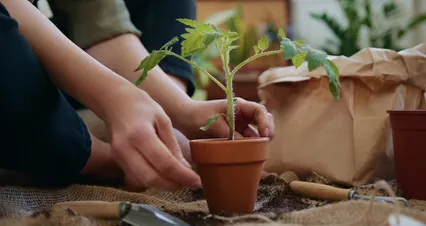
6. Monitoring and Adjusting
To keep your container garden thriving, regular checks are essential. Think of it as daily health check-ups for your plants. Assessing plant health and soil moisture is key to their happiness. Stick your finger into the soil about two inches deep. If it feels dry, your plants are waving a flag of thirst. If the soil is still moist, give them a little more time to soak in the sunshine.
Seasonal changes can dramatically impact your watering routine. In summer, when the sun blazes, your plants might need extra hydration. During cooler months, they may require less. Adjusting your strategy based on these shifts is vital. For instance, if you notice wilting leaves or droopy stems, it’s a sign to increase your watering frequency. Conversely, if your plants look overly lush and the soil is soggy, back off a bit.
Keep an eye on the weather forecast too. If rain is in the cards, hold off on watering. Mother Nature can be quite generous! Ultimately, understanding your plants’ needs and the environment allows you to cultivate a beautiful, thriving container garden. Regular monitoring and adjusting your practices will lead to flourishing plants that are the envy of the neighborhood.

7. Using Watering Tools
Watering tools can transform your gardening experience from a chore into a breeze. Consider investing in a Watering Can with Long Spout. This allows for targeted watering, ensuring that the moisture reaches the roots and not just the leaves. Nobody likes a soggy foliage party, right? A good watering can helps you deliver hydration right where it’s needed, keeping your plants healthy and happy.
Moisture meters are another fantastic addition. These handy devices take the guesswork out of watering, providing accurate readings of your soil’s moisture levels. Just stick it in the soil and check the display. It’s like having a personal assistant for your plants!
When it comes to watering cans, choose one with a long spout or nozzle. This allows for targeted watering, ensuring that the moisture reaches the roots and not just the leaves. Nobody likes a soggy foliage party, right? A good watering can helps you deliver hydration right where it’s needed, keeping your plants healthy and happy. Embrace these tools, and watch your container garden thrive with ease!

8. Mulching Techniques
Mulching is like giving your container plants a cozy blanket. Applying mulch helps reduce evaporation, keeping your soil moist for longer periods. This is especially beneficial during those hot summer months when the sun seems relentless. Plus, it adds a polished finish to your pots, making them look extra fabulous.
So, what types of mulch are best for container gardens? Organic options, like shredded bark, straw, or wood chips, work wonders. They not only suppress weeds but also enrich the soil as they break down. If you’re feeling adventurous, consider using Decorative Stones for Mulching for a stylish, low-maintenance alternative. They provide excellent moisture retention while adding a chic touch to your containers.
Remember to apply mulch around the base of your plants, leaving some space around the stems to prevent rot. A layer of about two to three inches is ideal. Embrace mulching, and you’ll find that your container garden can handle the heat while looking fabulous!

Dealing with Extreme Weather
Extreme weather can wreak havoc on your container garden, but with the right strategies, you can keep your plants flourishing. When the temperature skyrockets, it’s crucial to take extra precautions to maintain moisture levels. Watering deeply is essential; this means saturating the soil until it drains from the bottom of the pot. This encourages roots to grow deeper and seek moisture, making them more resilient against drought.
Consider timing your watering carefully. Early morning is prime time; the cooler temperatures mean less evaporation. If the heat is unbearable, you might need to check your plants more than once a day. Look for signs of distress, like wilting or drooping leaves, which indicate that your plants are thirsty.
On the flip side, during rainy spells, be cautious. Excess water can lead to root rot, especially in containers that don’t drain well. Ensure your pots have adequate drainage holes, and consider elevating them slightly to promote airflow. If you notice standing water, take action! You can either move your pots to a drier area or use a saucer to catch excess water.
By staying mindful of the weather and adjusting your care routine, you can protect your container garden from extreme conditions. A little attention goes a long way in keeping your plants happy and healthy, regardless of what Mother Nature throws your way.
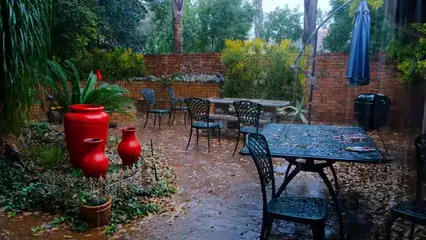
a. Hot Weather Strategies
Hot weather can turn your container garden into a desert faster than you can say “thirsty plants!” Here are some nifty tips to keep your greenery lush during heat waves.
First, increase your watering frequency. In scorching temperatures, your plants might need hydration daily, or even twice a day! Check the soil regularly. If it feels dry an inch down, it’s time for a drink. Don’t be stingy—water deeply. This encourages roots to grow down, seeking moisture like a treasure hunt.
Timing matters too! Water early in the morning. This helps your plants absorb moisture before the heat kicks in. Plus, it reduces evaporation, so you’re not wasting water. If you can’t make it in the morning, try late afternoon but avoid the peak sun hours.
Another trick? Use mulch! A layer of organic mulch can keep the soil cooler and retain moisture longer. It’s like a sun hat for your plants!
Lastly, consider grouping your pots together. This creates a mini-ecosystem that helps retain moisture. Plants become best buddies while keeping each other cool. If you’re looking for a cozy spot for your plants, think about getting a Hanging Planters to give them some extra flair and shade!

b. Rainy Season Considerations
Ah, the rainy season! While your plants may rejoice, excess water can spell disaster. Managing moisture is key to preventing root rot and keeping your garden healthy.
Start with drainage. Ensure all your containers have proper drainage holes. If water sits, your plants could be in trouble. Elevate pots with bricks or trays to prevent water pooling. Think of it as giving your plants a VIP lift!
When heavy rain is on the horizon, check your pots. After a downpour, assess the moisture levels. If it’s too soggy, consider moving your plants to a covered area for a short time. It’s like temporary shelter from the storm!
In addition, avoid watering during the rainy period. Your plants are getting enough love from Mother Nature. If you spot yellowing leaves or mushy stems, it’s a sign of too much water. Adjust your watering schedule accordingly.
Lastly, remember that not all containers are created equal. Choose materials that handle excess moisture well. Terracotta Plant Pots are pretty, but they can dry out quickly, so use them wisely. With these strategies, you can keep your container garden thriving, rain or shine!
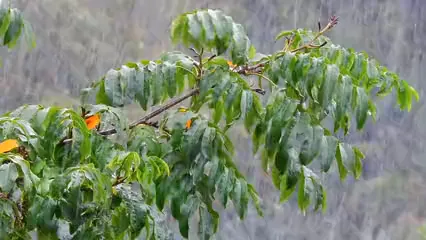
Conclusion
Proper watering practices are crucial for thriving container gardens. They can mean the difference between a droopy disaster and a vibrant oasis. By adjusting your techniques based on the weather—whether it’s hot sun or pouring rain—you can ensure your plants get the care they need.
Always observe your plants. They’ll tell you when they’re thirsty or drowning. Each season brings its own challenges, but with a little attention, your container garden can flourish year-round. Embrace the nurturing process, and enjoy the fruits (and flowers) of your labor! Happy gardening!
FAQs
How often should I water my container plants?
The frequency of watering depends on several factors. Consider the type of plant, pot size, and weather conditions. Most container plants need watering when the top inch of soil feels dry. In hot weather, daily checks are essential, while cooler days may allow for longer intervals.
Can I overwater my container plants?
Absolutely! Overwatering can lead to root rot. Signs of overwatering include wilting leaves, yellowing foliage, and mushy stems. Ensure your pots have drainage holes and adjust your watering frequency based on soil moisture.
What should I do if my container soil dries out completely?
If your soil is bone-dry, rehydrate it slowly. Start by soaking the entire pot in water for about 30 minutes. If that’s not an option, water deeply, allowing moisture to penetrate the soil gradually. This helps avoid water running straight through without soaking in.
Are self-watering containers effective?
Self-watering containers can be helpful, especially for busy gardeners. They provide a consistent moisture level, reducing the frequency of watering. However, ensure they have proper drainage too, as stagnant water can cause root issues.
What types of plants are best for container gardening?
Drought-tolerant and low-maintenance plants are excellent choices for container gardening. Consider succulents, herbs, and annual flowers like marigolds or zinnias. These plants thrive with minimal fuss and can handle varying moisture levels.
How do I know if my container has enough drainage?
Proper drainage is essential for healthy container plants. Check for drainage holes—if water pools at the bottom after watering, your container may not drain well. Elevate pots if necessary, and ensure the holes are not clogged to promote airflow and moisture escape.
Please let us know what you think about our content by leaving a comment down below!
Thank you for reading till here 🙂
For more insights on effective watering practices, check out our post on Best Practices for Watering Container Gardens.
All images from Pexels
